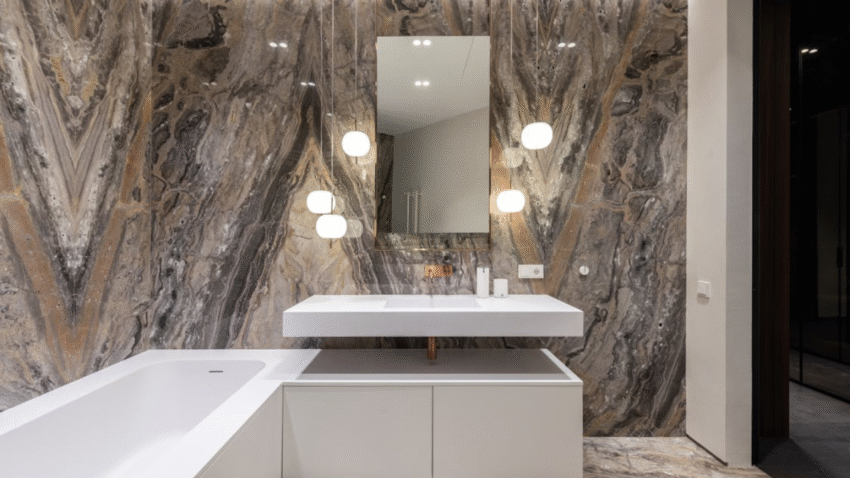Introduction
Noticing unsightly black or green spots creeping up your bathroom walls? This guide on how to clean mold off bathroom walls will walk you through effective, safe methods to eliminate mold and prevent it from coming back. Mold can damage walls, trigger allergies, and make your bathroom feel musty no matter how often you clean.
Why Cleaning Mold Off Bathroom Walls Matters
Mold is more than just an eyesore—it’s a health hazard. Bathrooms, with their frequent exposure to humidity, warm air, and poor ventilation, are the perfect breeding grounds for mold and mildew. Spores can irritate your lungs, eyes, and skin, and in extreme cases, may cause respiratory issues. If left untreated, mold can also damage paint, drywall, and grout, making repairs more expensive down the line.
Removing mold from your bathroom walls restores air quality, protects your health, and keeps your bathroom looking fresh and hygienic. Tackling it early helps prevent it from spreading to tiles, ceilings, or fixtures.
Step-by-Step Guide to Cleaning Mold Off Bathroom Walls
Step 1: Identify the Mold
Before cleaning, inspect the mold closely. If it covers more than a square meter or keeps returning despite cleaning, it may be time to call a professional. For small patches, cleaning it yourself is safe and effective.
🛑 Note: If you suspect toxic black mold (Stachybotrys chartarum), wear a mask and gloves and consider professional removal if you have underlying health issues.
Step 2: Prepare the Area
Ventilate the bathroom by opening windows and switching on the exhaust fan. Protect nearby fixtures and the floor with an old sheet or plastic. Wear gloves, a mask, and old clothes to avoid exposure.
Step 3: Choose a Cleaning Solution
Here are 3 effective mold-cleaning solutions:
- White vinegar (natural & effective): Pour undiluted white vinegar into a spray bottle.
- Hydrogen peroxide (for tougher stains): Use 3% concentration in a spray bottle.
- Bleach solution (last resort for stubborn mold): Mix 1 part bleach to 10 parts water.
Never mix cleaning products together, especially bleach and vinegar, as they can create toxic fumes.
Step 4: Apply the Cleaner
Spray the moldy wall generously with your chosen solution. Let it sit for at least 10 minutes. For vinegar or peroxide, allow up to 1 hour of dwell time for maximum mold-killing effectiveness.
Step 5: Scrub the Mold
Use a soft-bristled brush or sponge to gently scrub the area in circular motions. Avoid using abrasive pads that may damage paint or tile grout. If you’re cleaning painted walls, scrub lightly to prevent stripping the paint.
Step 6: Rinse and Wipe Dry
Wipe the cleaned area with a damp cloth to remove residue. Then dry thoroughly with a towel or clean rag. Moisture left behind can invite mold to return, so this step is critical.
💡 Run the bathroom fan or leave windows open for an hour after cleaning to dry the walls completely.
Step 7: Dispose of Cleaning Materials
Toss used rags, gloves, and brushes if they’re too moldy to reuse. Wash reusable tools in hot, soapy water and disinfect them with vinegar or bleach solution.
Common Mistakes to Avoid
Mistake 1: Only Cleaning Visible Mold
Mold often has roots that penetrate the wall surface. Wiping away just the surface doesn’t solve the problem.
Solution: Use mold-killing solutions like vinegar or peroxide and ensure deep penetration by letting it sit.
Mistake 2: Using Too Much Water
Soaking walls can worsen mold problems, especially if water seeps into drywall or grout.
Solution: Use spray bottles and damp—not soaked—cloths.
Mistake 3: Painting Over Mold
Trying to cover it up with paint traps moisture underneath, leading to bubbling, peeling, and more mold.
Solution: Fully remove mold and allow the wall to dry before painting with mold-resistant paint.
Mistake 4: Not Fixing the Cause
Cleaning mold without addressing the source of moisture is a temporary fix.
Solution: Check for poor ventilation, leaks, or steam buildup and fix them promptly.
Mistake 5: Using the Wrong Tools
Wire brushes or abrasive sponges can damage paint and drywall, making surfaces more porous.
Solution: Use soft brushes, microfiber cloths, or non-scratch scrub pads.
Extra Tips & Bathroom Hacks
- Add a dehumidifier: If your bathroom has no window, a small dehumidifier helps reduce moisture and prevent mold.
- Use mold-resistant paint: If mold keeps returning, repaint your bathroom with anti-microbial paint.
- Install a timer on your exhaust fan: Let it run for 30 minutes after every shower to keep walls dry.
- Looking to stop mold at the source? Read our guide on how to improve bathroom ventilation.
Conclusion
Mold on bathroom walls is a common but manageable problem. With simple tools like vinegar, peroxide, and a little scrubbing, you can eliminate mold and restore cleanliness. The key is drying the area thoroughly and preventing future moisture buildup through better ventilation or routine maintenance.
🧼 Keep this guide handy and make wall mold a thing of the past.
Bookmark it now to stay ahead of bathroom mold for good.
